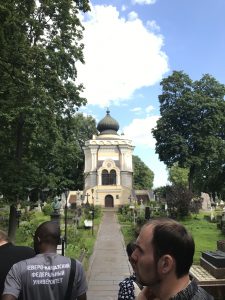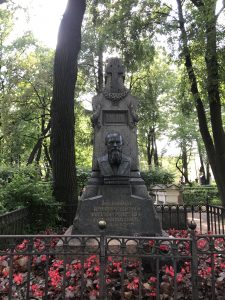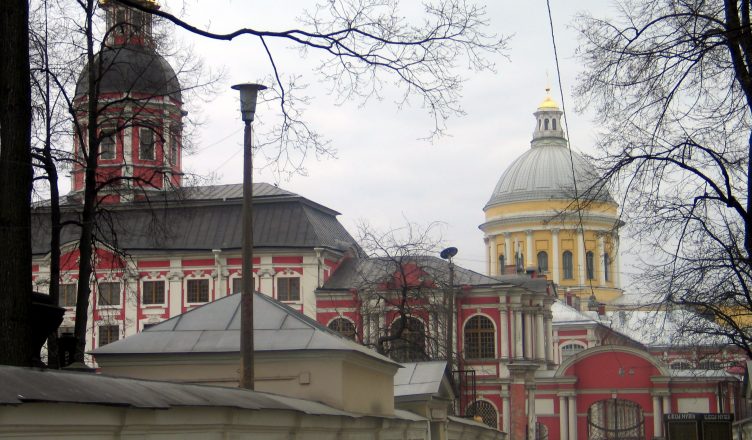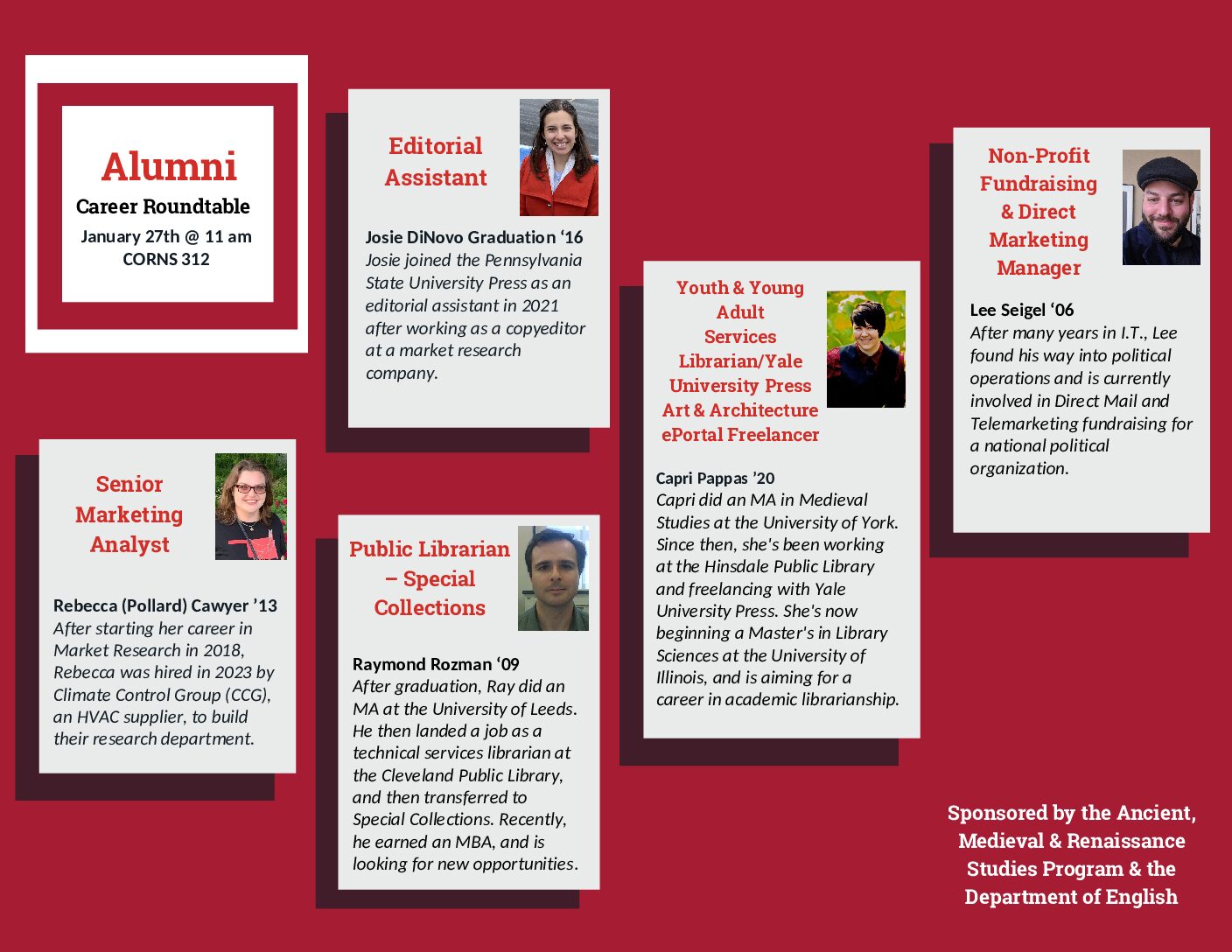A monk led us through the cathedral back outside. He was clothed in black robes and talked very softly. The cathedral was enormous, with beautiful artwork decorating every inch of wall,and it went up into a dome, making it appear more expansive. There were icons of Russian Orthodox saints with golden backgrounds everywhere. As we passed through the cathedral doors, I could hear the bells ring for the noon hour. Immediately in front of the cathedral was an old graveyard with stones both massive and modest. Earlier, the interns had worked on restoring the graves, removing weeds and fallen branches. The monk led us to the right of the cathedral, to another wing of the monastery that was painted a salmon color into a cramped room. This is where the famed Russian icons are hand-made specifically for this monastery. The icons were in various stages of construction, some completely finished while others were only beginning to be sketched. As the tour continued, I understood more and more why efforts are being made to protect and restore places like this.

Monasteries have been around for centuries and are considered a major hallmark of many religions. They are the places where monks and nuns alike can devote themselves to worship and study religious texts. Monasteries also are vitally connected to their communities, providing church services, education, and food. Russia, known for its strict Eastern Orthodoxy following, has its fair share of monasteries. While on a Theory to Practice grant and Baran Fellowship, I went to Hermitage State Museum this past summer and was sent to a famous monastery in St. Petersburg, both to see why keeping the monastery alive is so important, and to convince others of my generation to care about their restoration and preservation.
Alexander Nevsky Monastery was named after the famed Alexander Nevsky. He, along with his troops, drove the Swedes out of what is now present-day St. Petersburg in 1256 and was made a saint of the Russian Orthodox church upon his death. When Peter the Great built the city of St. Petersburg in 1703, he wanted to honor Alexander Nevsky, so the monastery was founded in 1710 and consecrated by Peter the Great’s physical presence on March 25, 1713. It contains some of the oldest buildings in the city and is still active today. In 1750, a shrine designed to protect the holy remains of the cathedral was constructed out of one and a half tons of pure silver. In its prime, it had sixteen churches as part of the complex.
The Russian Revolution that eventually brought on communism hurt many religious institutions, including the Alexander Nevsky Lavra Monastery. The new Soviet regime was not interested in maintaining organized religion and even did what it could to destroy it. Churchgoers to the Alexander Nevsky monastery managed to hold off Soviet robbers for a time, but the monastery was eventually shut down and stripped of its valuables in the 1930s. The churches were rummaged through and the graveyards were desecrated. Even so, the monastery was lucky enough to survive, even though by 1985 it had dwindled to five churches from its original sixteen. In [year/date], the monastery began holding services again and the holy remains of Alexander Nevsky were restored. Today, it is one of the best preserved monasteries in Russia, and its graveyards are the final resting place of many Russian artists, including Dostoyevsky, Tchaikovsky, Petipa, and Rimsky-Korsakov.

During my internship at the Hermitage State museum, I was sent to the Nevsky monastery to do community service. We and a group from UNICEF came to help clean the graveyards and courtyards of the complex. But this was not the main reason why we were there. Russia’s youngest generation, like in many countries around the world, has grown apathetic to institutionalized religion. Fewer young people are going to church, much less bothering to learn about it or other religious institutions. Because of this, many old religious structures, including monasteries, are falling into disrepair and neglect. As part of our mission at the monastery, we were trying to start a conversation about awareness of these old religious institutions and their importance to history. We were filmed answering the question, “What do you think of when you think of the word ‘monastery?” (If the reader wants to know, I answered with “Я думаю дисциплна”— “I think of discipline.”) These segments were later aired on the local Russian St. Petersburg news station, in hopes that it would reach the youth of the country.Volunteering at the monastery was a lesson in contraries. On the one hand, the buildings of the monastery, with their quintessentially Russian onion-shaped colorful domes, were unmistakably impressive. . At the same time, in the shadows of these majestic towers, signs of degradation and neglect were everywhere. For our assignment, we were led to a courtyard near the back. This was where we needed to do the most cleaning. I could definitely see why. In contrast to the splendure when we first entered, this courtyard was dirty, overgrown, and seemingly unused. We pulled out weeds with thorns on them, and sorted through trash that had been left there for a long time. There were slabs of wood, leaf-litter, an old pair of boots, cinder blocks, water bottles, and even a large, rusted, metal poll. I was baffled by a lot of things that we picked up, and wondered how they got there and how long they had been there. It made me think of how other parts of the monastery would look if it did not receive proper care. Imagining all of the beauty of the architecture and paintings falling into disarray was upsetting. The rest of the monastery could easily end up like the courtyard if the monastery’s guardians were not diligent. I understood why we were sent there–not only help to clean, but to also see for ourselves why restoration is so important.
Why should we care about the upkeep of monasteries? A student in my group once asked a Russian teacher why so much Soviet history was still preserved in Russia. The teacher’s answer was that it was history—it helped to shape them and their culture into what they are today; therefore, they should not forget or neglect it. I believe this is the same for monasteries. They were very important to medieval and early modern culture. They were places that allowed travelers to stay for the night, gave food to the poor, and provided education to the local towns and villages. In many ways, it was a hub of society, offering space for peace and contemplation for all. These developments should not be forgotten, especially in a world that is stressed to the max with work, school, and the demands of family. Even if religious institutions are in decline with the newest generation, we should still care for these places as monuments to the past.
The cathedral’s Russian icons are stunning works of art. The colorful buildings brighten up the atmosphere with pinks, yellows, and oranges. The graveyards hold much history as well, and there are several shrines in the graveyards that act as places of peace, prayer, and contemplation. Because of their significance, they should not be forgotten or neglected.
As more time passes and progresses into a new modern age, we should not forget the past. Instead, we should take the time to learn about the remains that have survived all this time, and protect them. Historical preservation is a discipline, and like the disciplined nature of the monasteries, it is essential to its survival. Much work went into creating and maintaining this place, and we must continue to care for it. It would be a shame to have a place so rich in history and art slowly fade and disappear from the earth and from memory.






